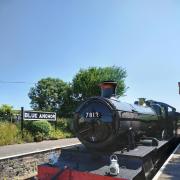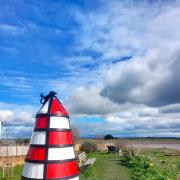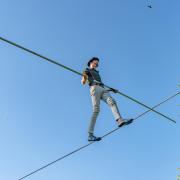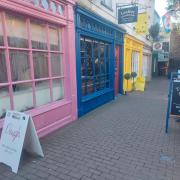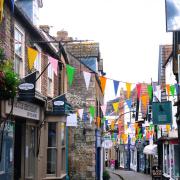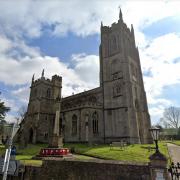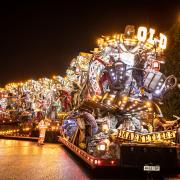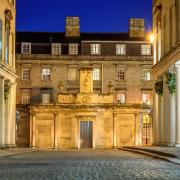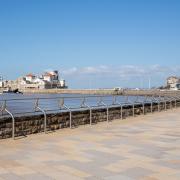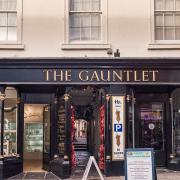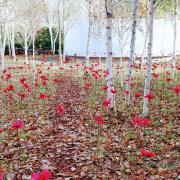Yeovil is a town with heritage aplenty - the hallmarks are there, waiting to be discovered

Situated in beautiful countryside, just west of the River Yeo, Yeovil has become known to some, somewhat unjustly, as an industrial town stripped of its heritage. But a walk through its thriving market streets will confirm it is still a country town at heart and the hallmarks of its heritage are still here.
It’s easy to forget that this is a town founded on industry. First cloth, then tanning and glove making; now it’s better known for Westland, one of the world’s largest helicopter manufacturers, and the famous Fleet Air Arm Museum at nearby RNAS Yeovilton. Unfortunately it was this military significance that made it a target for air raids in 1940, which destroyed significant parts of the town.
Long gone are the medieval Market House and covered Shambles, demolished in 1849 – so too the Toll House and Parish House. Little evidence of the town’s glove-making history remains either – just a derelict factory on Eastland road (once Kiddles Lane), home to the Eastland Road Dressing Yard and Tannery since 1828.
So Yeovil is very much a changed place to the town of yesteryear, but much of that transformation is for the better. The biggest town in South Somerset with some 45,000 people, Yeovil has undergone significant regeneration and is now a thriving hub of industry, commerce and leisure. For those interested in its history and heritage, however, there is still plenty to be found. Here are 10 historical and heritage highlights in and around Yeovil:
Historic houses
The area teems with handsome hamstone houses, the best known of which is Montacute House, a beautiful Elizabethan mansion belonging to the National Trust. Built in the late 16th century by Sir Edward Phelips, it was used as the Palmer residence in Ang Lee’s adaptation of Sense and Sensibility and again in 2015, when it stood in for Greenwich Palace in the BBC drama Wolf Hall. Newton Surmaville House in the nearby hamlet of the same name is another glorious Elizabethan manor, built between 1608 and 1612 for Robert Harbin, a Yeovil merchant. Successive generations lived in the property for 399 years until it was sold for the first time in its history in 2007 following the death of its then owner Sophie Rawlins (nee Harbin).
Known for its formal gardens, Tintinhull House is a spectacular 17th-century Grade I listed house which the National Trust not only opens to visitors but rents out too.

Air, land and sea
A visit to nearby Fleet Air Arm Museum is a fascinating family day out. Opened by the Duke of Edinburgh in 1964, it has become Europe’s largest naval aviation collection, housing some 50 historic aircraft from the early days of naval flying to modern helicopters. There is even a Concorde prototype, which visitors can step aboard. Entry is £8.40 for children and £11.20 for adults (concessions available).
At Yeovil Junction station, you’ll find a slightly slower mode of transport at the Yeovil Railway Centre, which houses a variety of old locomotives and a model railway and conducts a regular programme of events. It was originally formed in the 1990s to preserve the original Southern Railway turntable installed 50 years before. Now visitors can watch the spectacle of large steam engines being turned from a special viewing platform.
The centre is open year-round and tickets cost from £3-8.

Places of worship
Yeovil and its surroundings are dotted with a wealth of fine old churches, none more grand than the Church of John the Baptist, which rises above its modern surroundings in the town centre. It has long been known as the Lantern in the West, due to its huge windows that admit such a flood of light. A church has stood on this site since 950AD, although the current impressive building dates from the 14th century. Other lovely churches nearby include the Church of St Mary Magdalene, a Grade II listed building in Barwick, which is also worth seeking out. Though its chancel was rebuilt during a Victorian restoration, the pulpit dates from 1619 and the beautiful building itself goes back as far as the 13th century.
Ham Hill
Many local old buildings are typified by a warm, golden coloured stone, which originated from the quarries on nearby Ham Hill. It is unclear when quarrying began here but by the 19th century there were 24 small quarries employing some 200 men. Today there are only two, but the north quarry is the oldest running hamstone quarry in existence. Described by Simon Jenkins, ex-chairman of the National Trust, as ‘the loveliest building material in England’, it is soft enough to be cut to make decorative features and can be found in medieval church towers throughout the county. Local examples of this recognisable stone, which has been worked by masons for a thousand years, include Newton Surmaville House and Tintinhull House.
Glorious getaways
The Monarchs Way is a 990km-long footpath that approximates the escape route taken by King Charles II in 1651 after his defeat at the battle of Worcester, running from Worcester via Bristol and Yeovil all the way to Brighton. It runs along part of the Roman road that leads from nearby Ilchester all the way to Bath and is a wonderful way to wander to Castle Cary or Crewkerne.
A great way to view the historic highlights around Yeovil is on its cycling network, a traffic-free section of which runs from Penn Mill along the riverbank through picturesque Yeovil Country Park and past the Swan Theatre. This is part of Sustran’s NCN route 26, which runs from Portishead on the Somerset coast to the Isle of Portland on the Dorset coast via Wells, Castle Cary and Dorchester. You can also visit Montacute, West Coker, the sub-Hamdons or Barwick by cycling along NCN regional route 30, which winds west to Ilminster.
Huish Park history makers
Yeovil is home to Somerset’s only league football team. Founded in 1895, ‘the Glovers’ as they are known only entered the football league in 2003 but have established a long tradition of giant-killing in the FA Cup, famously beating Sunderland in 1949. The club plays at Huish Park, which is located to the north of the town, though in their humble beginnings as Yeovil Casuals they played at Penn Mill Athletics Ground for many years. At the time of writing the club had just been drawn at home to face Manchester United in the fourth round of the FA Cup, which will be a major financial boost to a small, lower league club.
Ancient to modern
For those interested in the past, Yeovil’s long history is evident everywhere, from the large Iron Age fort atop Ham Hill to the naming of its modern pedestrian shopping precinct, The Quedam, to reflect the town’s Roman roots. A Bronze Age golden torque (twisted collar) was found at Hendford, and the discovery of a mosaic pavement provided evidence of Roman occupation here. The Museum of South Somerset, which between 1965 and 2011 was housed in the former coach house of 18th century Hendford Manor, showed many fascinating exhibits and artefacts, giving its visitors the opportunity to trace the changing face of Yeovil through the ages. The exhibits have been moved to the Community Heritage Access Centre at nearby Lufton, but viewing is by appointment only.
Glorious green space
The beautiful Yeovil Country Park to the south provides 127 acres of wonderfully varied, tranquil open space. Incorporating Ninesprings, Penn Hill Park, Wyndham Hill, Summerhouse Hill and Riverside Walk, there is something for everyone, including a nature walk, cafe, children’s play area and a cycle path that follows an old railway line. At the foot of Hendford Hill, the area surrounding the beautiful Ninesprings is a particularly delightful area. With pathways meandering through beech woods and waterside walks around a delightful spring-fed lake, it is an idyllic escape from the bustle of the town.
Follies of Barwick
Voted among Britain’s top 10 follies by BBC Countryfile, those in Barwick Park, a picturesque estate of some 150 acres just south of the town, are well worth a visit. The follies themselves are as unusual as their names – the Fish Tower, Jack the Treacle Eater, the Needle, and Messiter’s Cone, which mark the north, east, south and west boundaries of the park respectively. Local history suggests they were built to give the estate labourers work during the depression of the 1820s, though they could date back as far as 1770. In the early 1990s they were bought by South Somerset District Council for a nominal £5.
Rustic taverns
The best of Yeovil’s lovely old inns are to be found on its outskirts. Little Barwick House, just south of the town, is a whitewashed Georgian restaurant with rooms, and is renowned for its delicious, locally-sourced menu.
A short walk west is The Mason Arms, a pretty thatched inn serving generous portions and real ales from its own microbrewery. Slipper cottage, a 17th-century hamstone cottage in Montacute, is a wonderful place to stay the night, with low beams, open fireplaces and a lovely cottage garden. It may only have two rooms but both are furnished with luxurious slipper baths.




